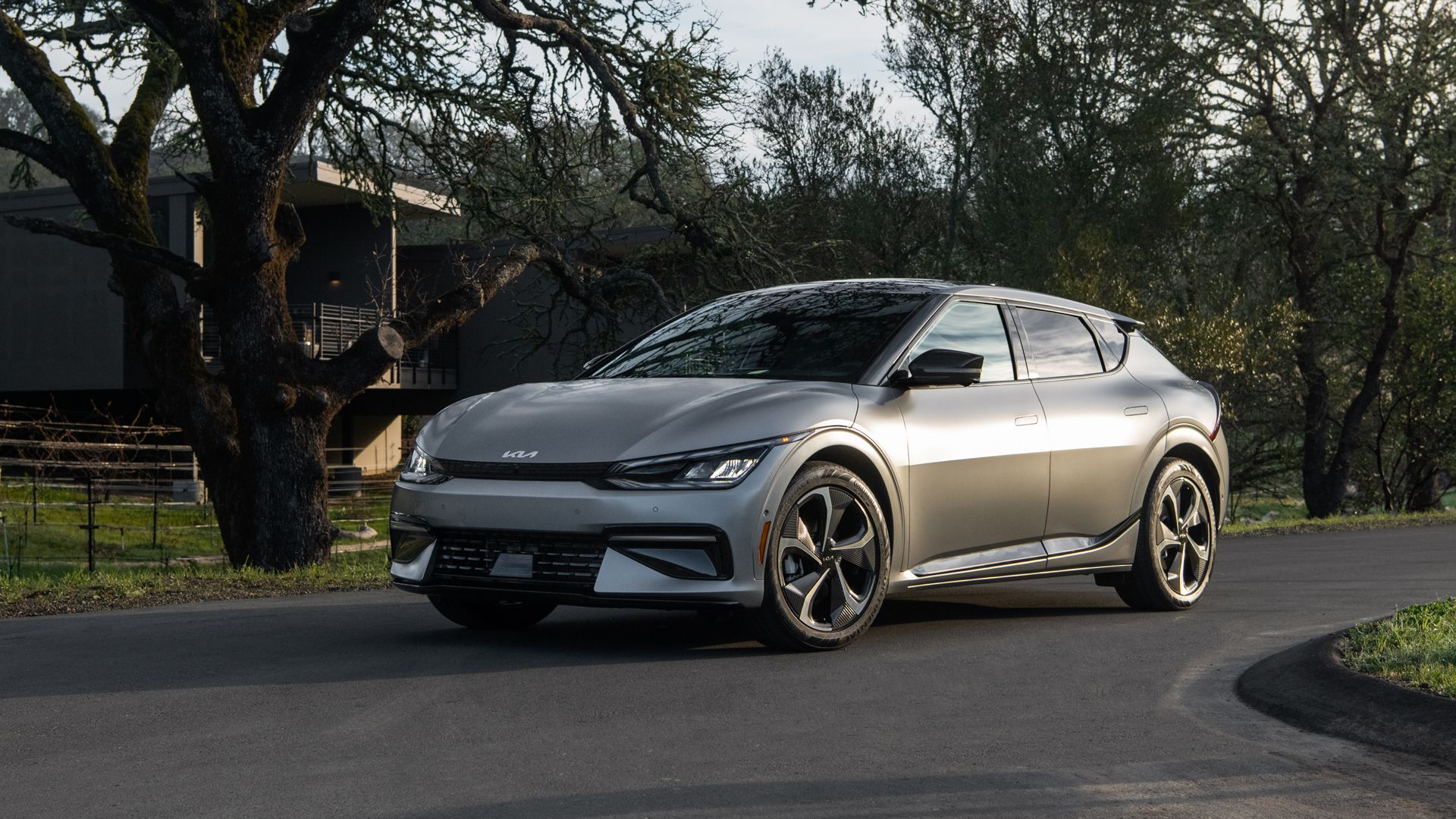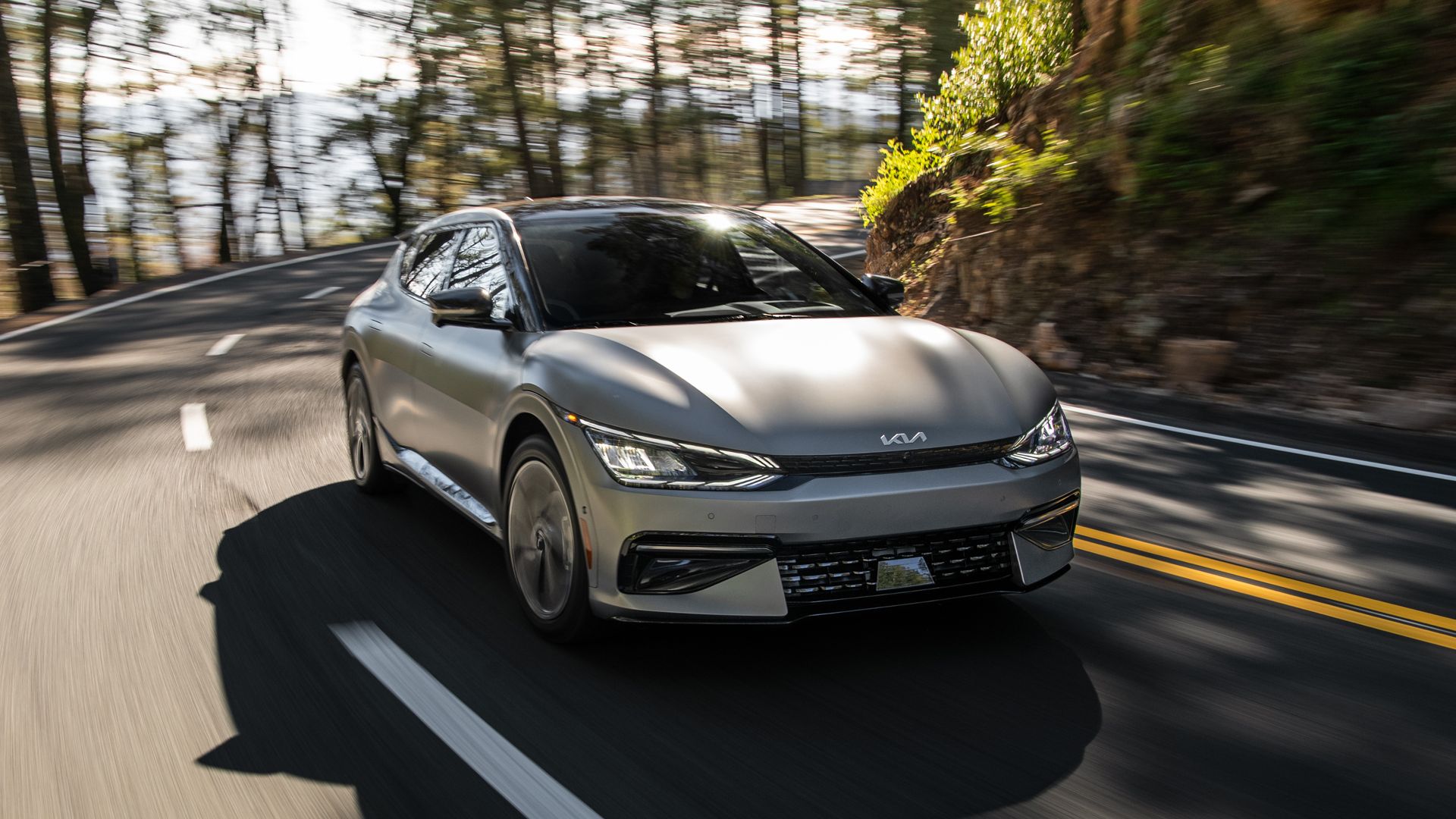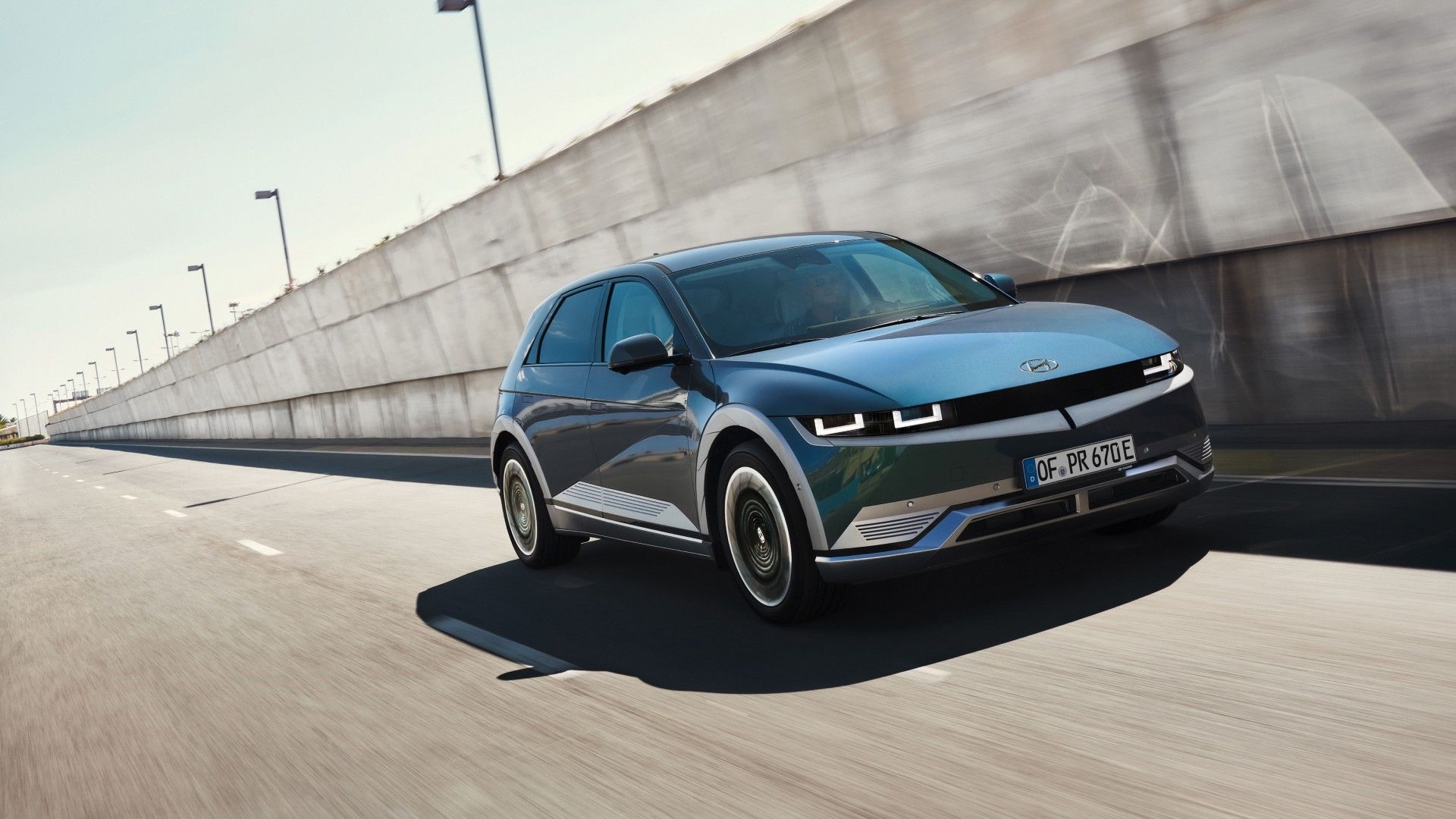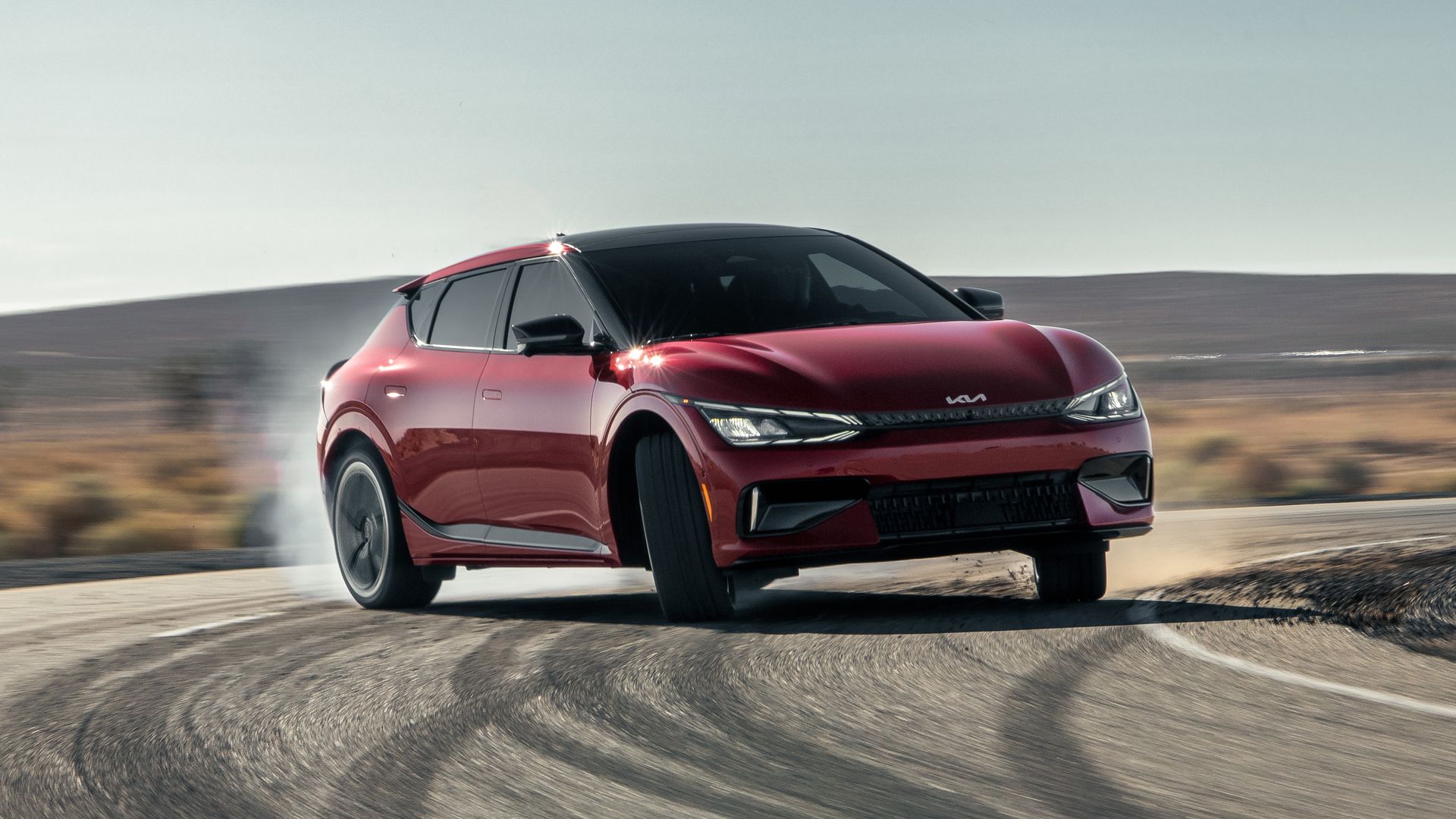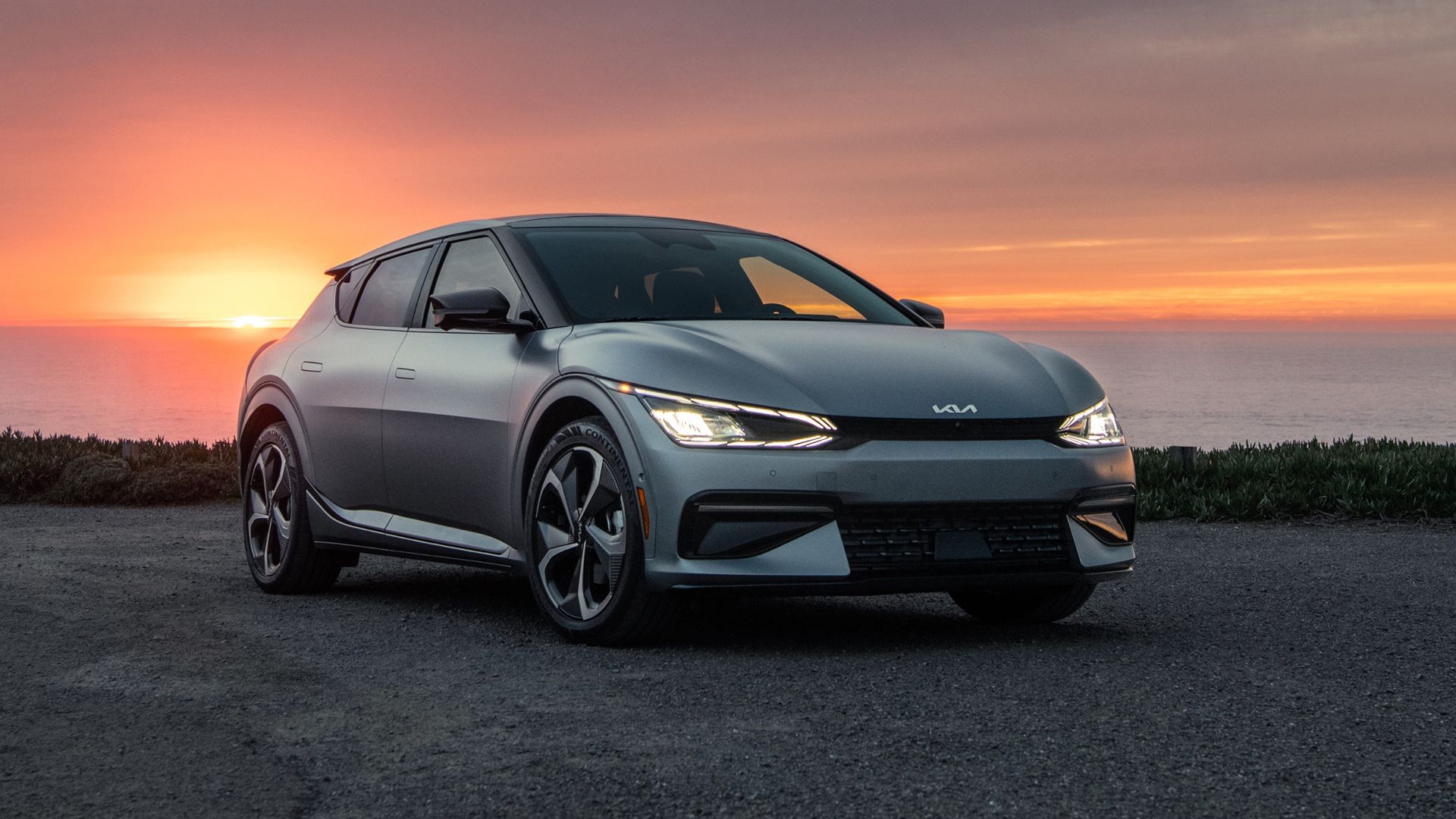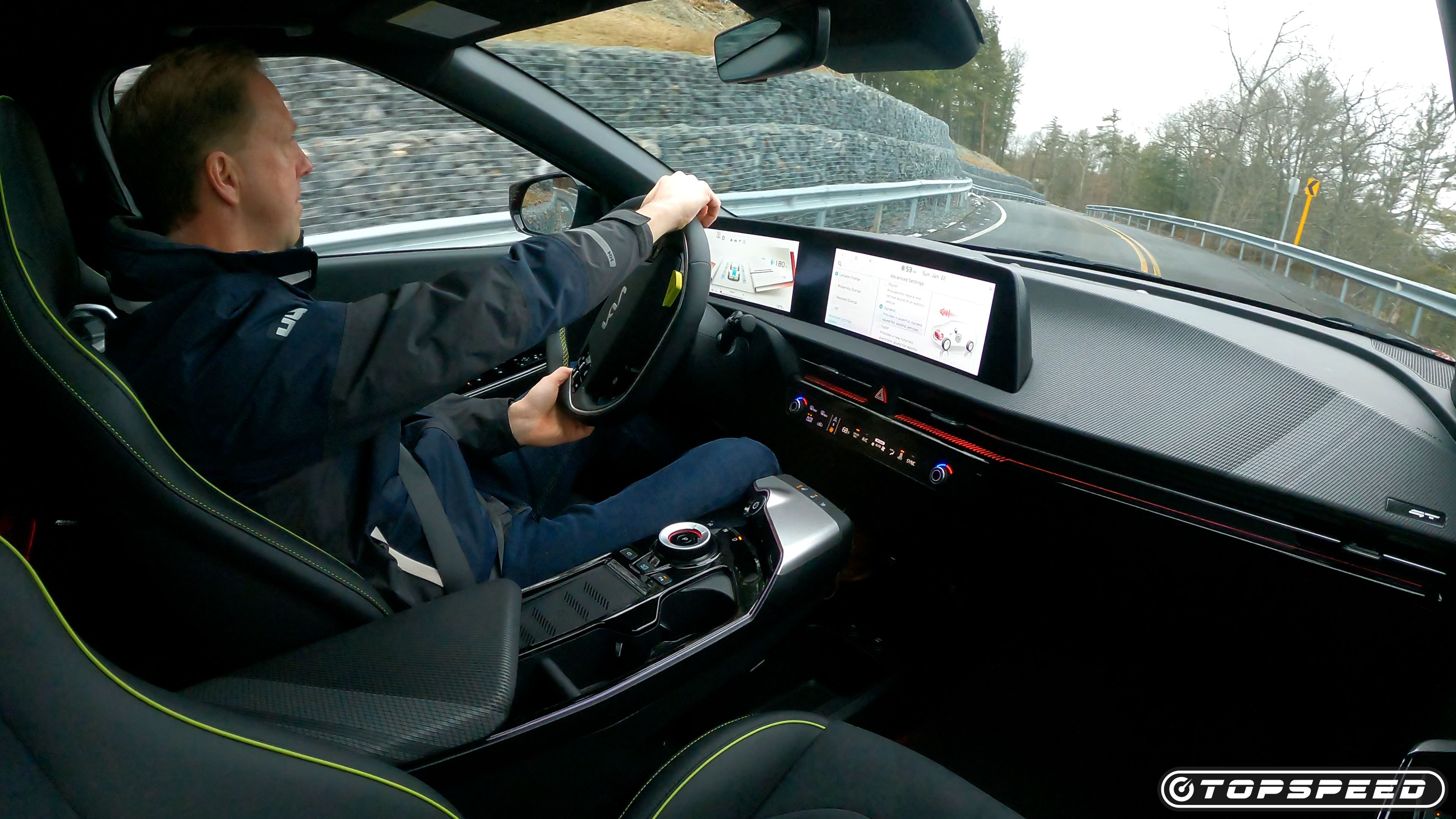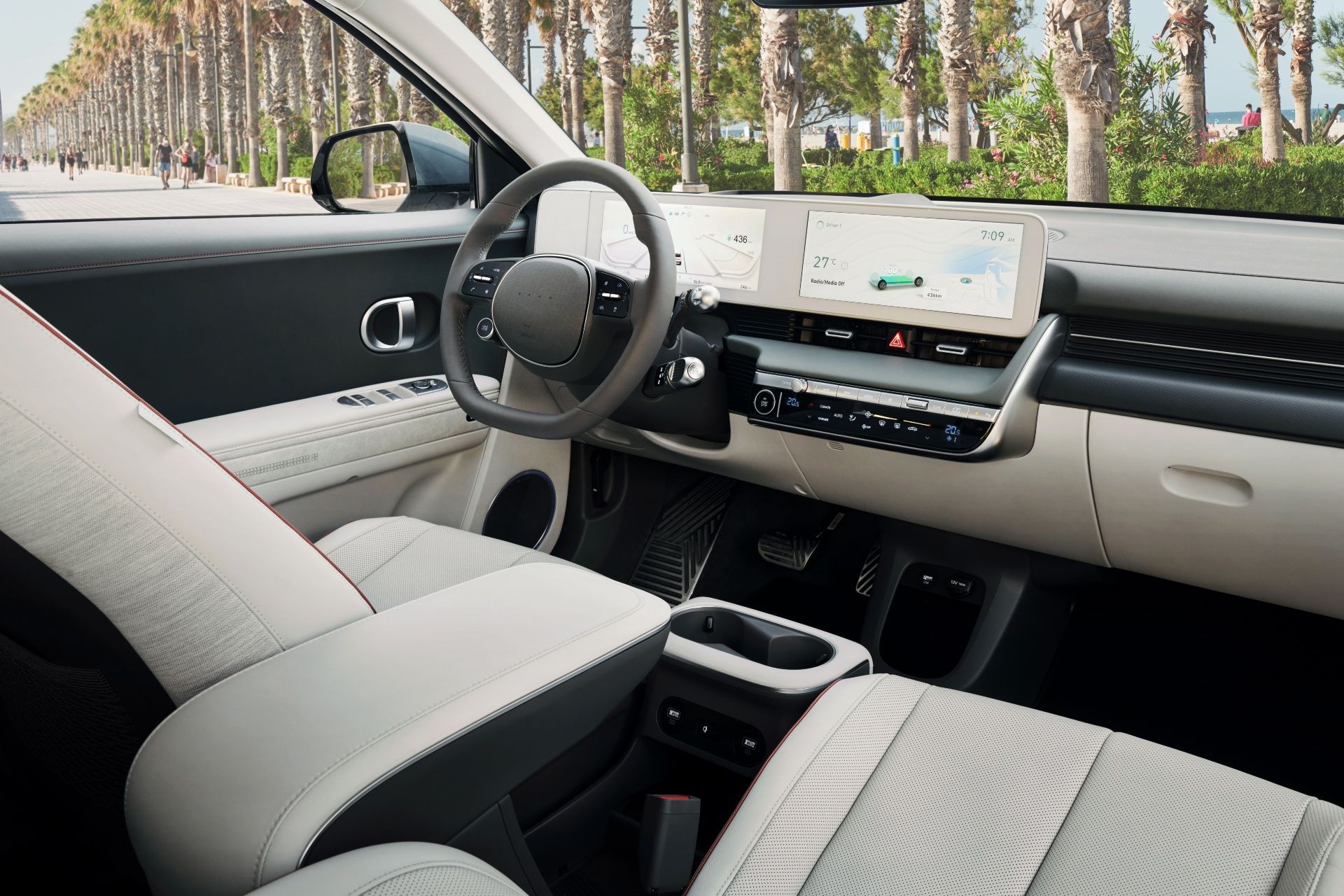The Kia EV6 and Hyundai Ioniq 5 are built on the same platform, share the same electric powertrain, and feature the same technological features, so it’s understandable if you think they are really the same car. This isn’t your typical case of badge engineering, though. The truth is, while the EV6 and Ioniq 5 share a lot of similarities, they both excel at different things in their own unique way. While choosing which one is best might depend largely on personal preference, the fact of the matter is that both cars are reliable, both benefit from one of the fastest charging options available today, and both have their own style.
10 The Kia EV6 Is Geared More Toward Performance
The Kia EV6 is offered in three trim levels: Wind, GT-Line, and GT, with the first two offered in both RWD and AWD configurations, and the GT only as an AWD model. The first two models are powered by either an electric motor mounted on the rear axle that delivers a total of 225 horses and 258 pound-feet of torque, or two electric motors - one on each axle – that deliver a combined 320 horsepower and 446 pound-feet of torque. The EV6 GT, on the other hand, features a dual-motor setup with 576 horsepower and 545 pound-feet of torque. Just like the EV6, the Ioniq 5 is also offered in three trims, but it is a lot less powerful. The base model is powered by a single, rear-mounted electric motor and can be had with either a standard-range battery when it delivers a total of 168 horsepower, or a longer-range battery, in which case the output is increased to 225 horsepower and 258 pound-feet of torque. The range-topping model has a dual-motor setup with 320 horses and 446 pound-feet of torque.
9 The Hyundai Ioniq 5 Has A More Comfortable Ride
When it comes to choosing between the EV6 and the Ioniq 5 it all depends on what type of driving experience you want behind the wheel. The EV6’s suspension gives it a firmer, sportier ride, which makes it perfect for the drivers looking for some sort of adventure. If, on the other hand, you want a car suitable for your family, the Ioniq 5 is the better choice. It offers a more comfortable ride, and thanks to its softer suspension, it "does a better job at smoothing over ruts and bumps in the road."
8 The EV6 Has A Sportier Ride
Despite the two models being similar in so many ways, they are quite different when it comes to ride and handling. According to Motortrend, the "Kia's ride is the sportier of the two, and it's tuned such that it perfectly walks the line between too firm and too soft." The model is offered as standard with a multi-link rear suspension that improves the sporty feeling and makes the car a lot more responsive. In the EV6 GT, things are even better. The model was built on an overall improved chassis and features Electronic Control Suspension (ECS). The latter changes the damping force according to the driving conditions and improves the car's ride. The suspension is also improved, so the EV6 GT features a more robust and agile ride.
7 The Ioniq 5 Loses The Range Battle
Both the EV6 and the Ioniq 5 are built on the same E-GMP platform and share the same electric motors and batteries. They are both capable of quick-charging at peak rates of 235 kW, and they need only 18 minutes to go from 10 to 80 percent - making them two of the fastest charging EVs currently available. But, the big difference between the two models is the range. For the Ioniq 5, the range is anywhere between 220 and 303 miles, based on the model and the battery, while for the EV6 the range goes from 252 to 310 miles in the standard models. The EV6 GT has a range of 206 miles.
6 The EV6 Is The Kia Stinger Of The Crossover World
As you probably imagined, the extra power makes the EV6 a little bit faster too. The EV6 RWD models can sprint from 0 to 60 mph in 7.2 seconds, while the AWD makes the same sprint 5.1 seconds. The EV6 GT, on the other hand, only needs 3.4 seconds to hit 60 mph. The Ioniq 5 is a little bit slower. The base model equipped with the long-range battery needs 7.4 seconds to go from 0 to 60 mph, while the 320-horsepower version goes from 0 to 60 mph in 5.2 seconds. However, it should be noted that a test drive made by the guys over Car and Driver revealed that the more powerful Ioniq 5 does the 0 to 60 mph sprint in 4.5 seconds.
5 The Ioniq 5 EV Has The More Practical Cabin
As we've already mentioned the two models are built on the same platform, and the Ioniq 5 has a slightly longer wheelbase: 118.1 vs. 114.2 inches. But, despite this difference, the EV6 is the bigger car: it measures 184.3 inches in length, 74.0 inches in width and 60.8 inches in height. On the other hand, the Ioniq 5 is measured at 182.5, 74.4 and 63.0 inches, respectively. Looking at the numbers, you would think the EV6 would have a more practical cabin, but that's not exactly true. Taller passengers will feel a lot more comfortable in the rear seats of the Ioniq 5, as it offers more space. The rear headroom is 38.7 inches, and the rear legroom is 39.4 inches. In the EV6, the rear headroom is 38.0 inches, and the rear legroom is 39.0 inches. The Ioniq 5 also wins in terms of cargo room: it has 27.2 cubic feet behind the rear seats and 59.3 cubic feet with the seats down. On the other hand, the EV6 has a cargo room of 24.4 and 50.2 cubic feet.
4 Kia’s Driver-Focused Cabin
The EV6's modern and eco-friendly cabin has been designed to offer a comfortable and stress-free experience for both the driver and all occupants. The seats are wrapped in vegan leather and are both heated and ventilated. The two 12.3-inch-wide screens are curved around the driver, so he has a better look at all vehicle information. They can be customized according to the driver’s personal wishes and preferences and display details on speed, remaining range, charging status, navigation, and other vital car information. Both screens are covered in a chemically toughened glass that improves both visibility and durability. Just like the Ioniq 5, the EV6 is offered with an Augmented Reality (AR) Head-Up Display (HUD) system that projects graphics from the base of the windshield in a large three-dimensional image.
3 Hyundai’s ‘Universal Island’ Moveable Center Console
We are not saying the interior of the EV6 is not just as amazing, but it is something you see on every other EV these days. Hyundai, on the other hand, took a step forward and made its cabin a lot more appealing. One of the coolest features it offers is the so-called “Universal Island” center console that moves back and forth 5.5 inches. This way, both the driver and the rear passengers can exit both ways when parked in a narrow spot. The Ioniq 5 also features a magnetic dashboard that allows you to place pictures and notes just as you would on the refrigerator for example. The entire cabin is made from eco-friendly materials, like fibers made from crushed used PET plastic bottles, and sustainable fibers such as sugar cane bio components, wool, and poly yarns.
2 Ioniq 5's Retro vs. EV6's Modern Approach
When it comes to design, it is just a matter of taste when picking the model you like best. Both models are unique in their own ways and look like no other EV on sale. Despite general beliefs, both are compact crossovers and not hatchbacks, with the Ioniq 5 being a little bit taller. The EV6 features a coupe-like profile that gives it a sporty look, while the Ioniq 5 went for a more retro look that makes you say "wow!" Its design was inspired by Hyundai Pony Coupé concept from 1974, and there's a small hint of Lancia Delta too. Both the headlights and the taillights have a unique, Sci-Fi look, and the wheels are also a head-turner. In general, the Ioniq 5's angular look fits the car perfectly and will help Hyundai sell a lot more cars.
1 One Korean Is Cheaper Than The Other
The Hyundai Ioniq 5 takes another point when it comes to prices. For the 2023 model year, Hyundai announced a new Ioniq 5 SE Standard Range trim, which makes the price gap between the two models even bigger. With the new additions, the 2023 Hyundai Ioniq 5 ranges in price from $41,450 in the base model to $56,500 for the Limited AWD model. Kia's EV, on the other hand, is a lot more expensive. The 2023 Kia EV6 price starts from $48,700 for the base EV6 Wind and goes up to $61,600 for the EV6 GT. Things were a little bit different for the 2022 model year when the Ioniq 5 price was a lot higher than the EV6’s price. And that’s because for the 2022 model year, Kia was offering an EV6 Light trim priced at only $40,900.

